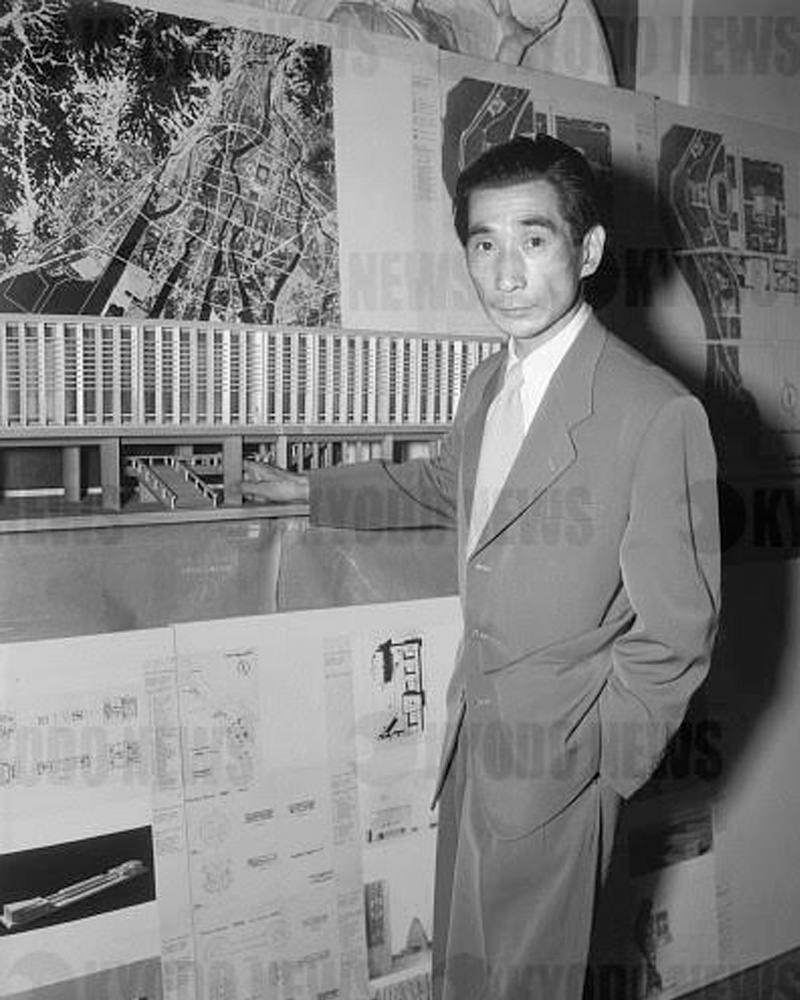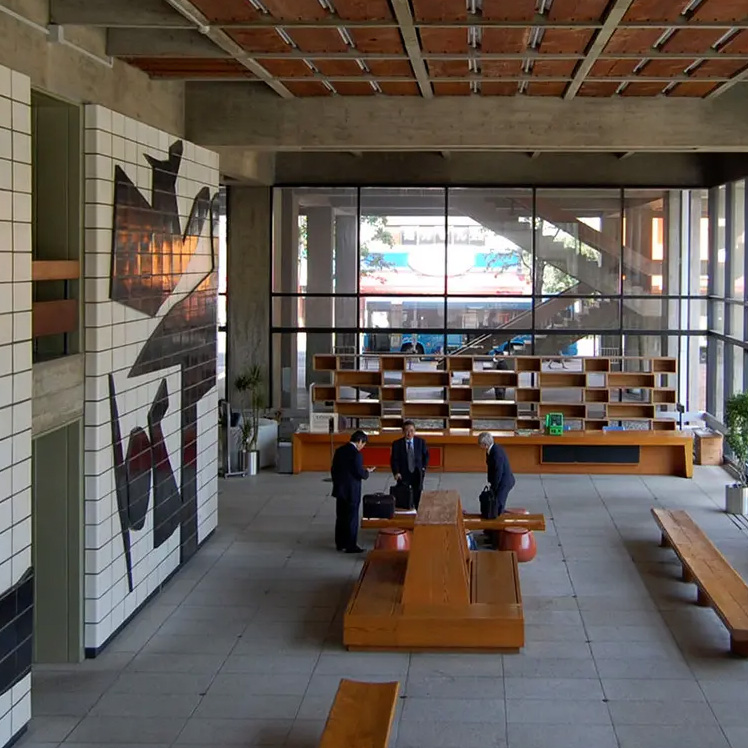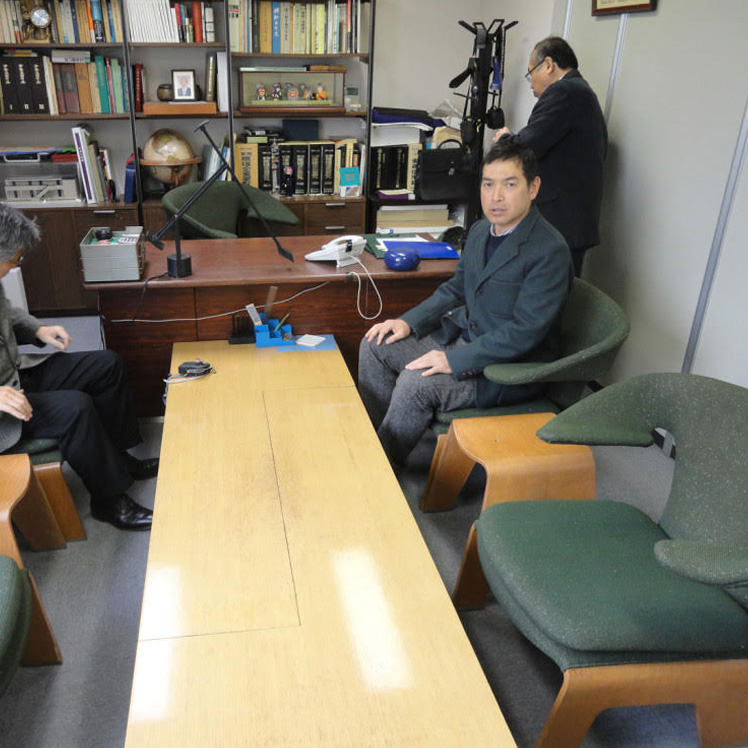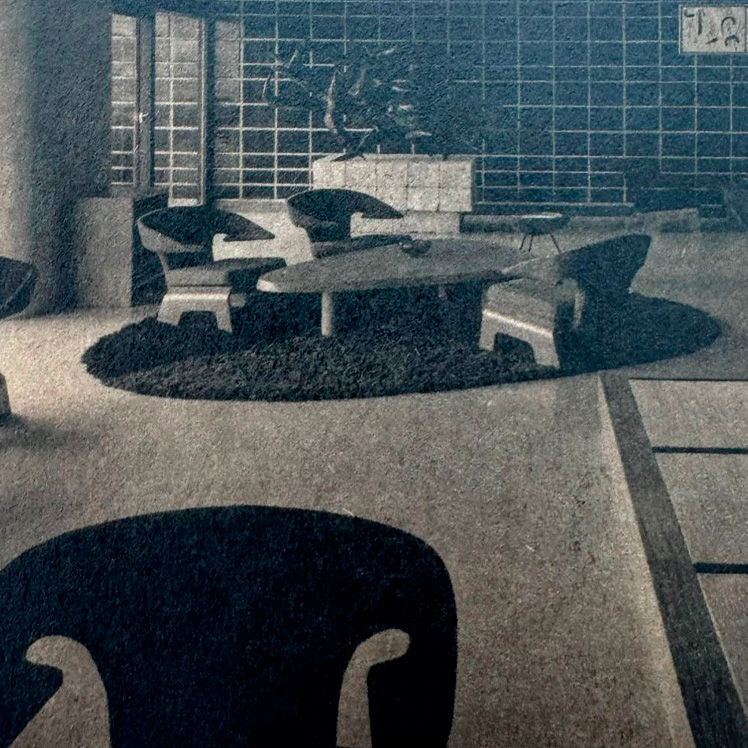Side Gallery
Side Gallery
WishlistFollow
Follow

Born in Sakai City, Osaka Prefecture in 1913, Kenzo Tange 丹下健三 enrolled in the Department of Architecture at the Faculty of Engineering at Tokyo Imperial University, inspired by Le Corbusier. After working at Kunio Maekawa Architects, he went on to graduate school at the University of Tokyo. After graduating, he taught at his alma mater from 1946 to 1974, presiding over the "Tange Laboratory." He nurtured many outstanding talents, including Takashi Asada, Yukio Otani, Fumihiko Maki, Arata Isozaki, Kisho Kurokawa, and Yoshio Taniguchi. In 1961, he founded the Kenzo Tange + Urban and Architectural Design Institute. Around the same time, he designed numerous masterpieces incorporating architectural beauty, including the Kagawa Prefectural Office Building, the National Indoor Gymnasium (now the Yoyogi National Gymnasium), and St. Mary's Cathedral, Tokyo. Following the proposal for the "Tokyo Plan 1960" in the 1960s, he was involved in Japan's national projects, such as the masterplanning of the venue for the 1970 World Exposition held in Osaka. From then on, he increasingly became involved in national projects overseas, expanding his activities to a global scale. His later masterpiece, the New Tokyo Metropolitan Government Building, incorporated postmodern trends, and throughout his life, he continued to explore new architectural possibilities without clinging to his past works. The Hiroshima Peace Memorial Museum (now the Hiroshima Peace Memorial Museum) was the first building constructed after World War II to be designated an Important Cultural Property, followed by the National Gymnasium. Tange passed away in 2005.
Kenzo Tange worked with furniture manufacturer Tendo Mokko on numerous projects, beginning with the spectator seating for the Ehime Prefectural Civic Center, designed by Tange in 1953. The Kagawa Prefectural Government Building, still considered one of his masterpieces, was Tange's first architectural project, with Isamu Kenmochi responsible for the interior design. Tendo Mokko worked with Tange on numerous projects during Tange's prime, but as Tange's work expanded globally, opportunities for collaboration decreased. However, in 1990, they delivered the largest piece of furniture ever to the Tokyo Metropolitan Government Building, a record that remains in the memory of the present day. Since then, they have supplied furniture to hotels around the country, including Prince Hotels and the Tokyo Dome Hotel. In recent years, they have also reproduced the "T-7304" and have been producing and repairing additional chairs for children, including the one delivered to the Yukari Bunka Kindergarten in 1967. X
Tange’s career spanned continents and decades. He mentored a generation of architects who carried his ideas into new realms. He reshaped Tokyo and left his mark on cities around the world. In 1987, he received the Pritzker Prize, the highest honor in architecture — recognition not only for his buildings, but for his vision of architecture as a bridge between tradition and modernity, humanity and technology.
Kenzo Tange died in Tokyo in 2005, but his legacy endures. His buildings still inspire awe, his plans still provoke debate, and his furniture rare, precise, and quietly powerful serves as a reminder of his belief in design as a total work of art. From the skyline to the chair, Tange sought harmony, innovation, and a future shaped by thoughtful design.



ENQUIRE ABOUT THE DESIGNER